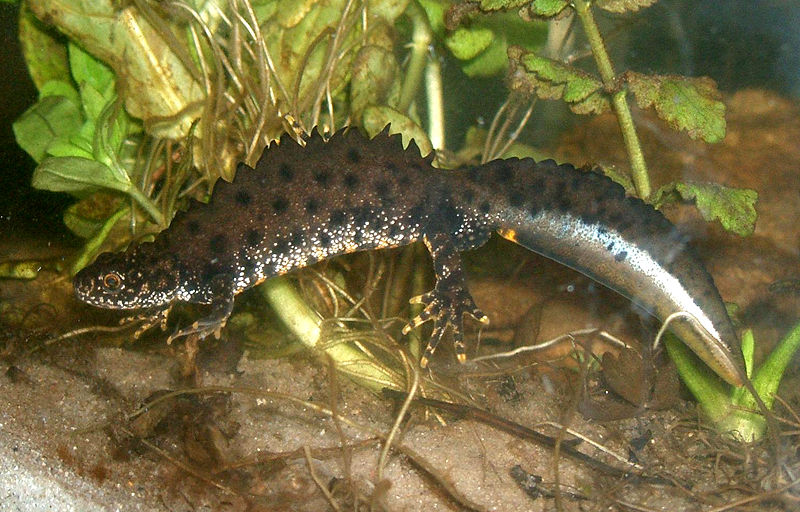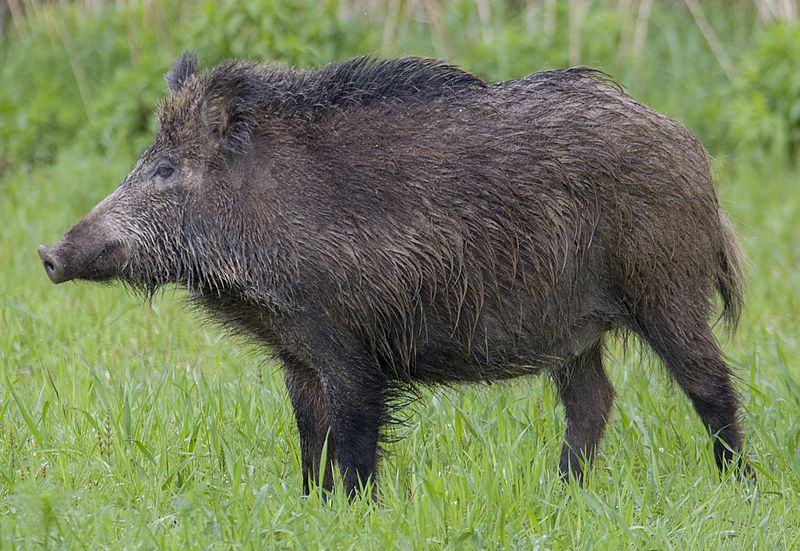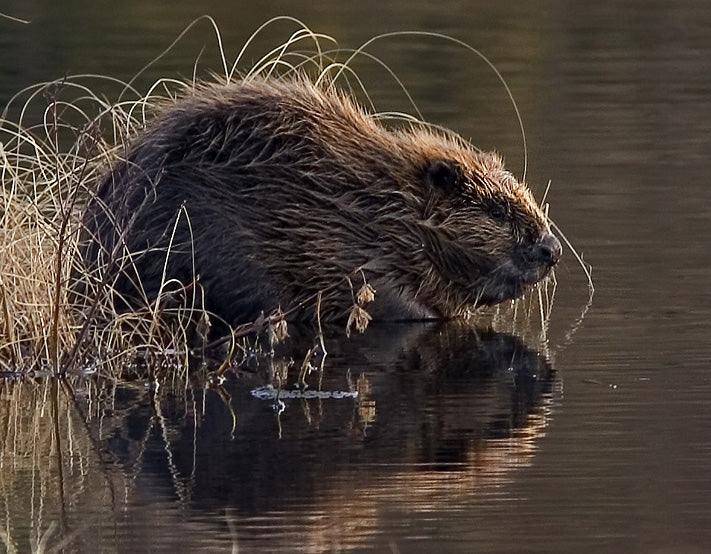
A Guide To British Fauna - The Great Crested Newt
Scientific Name : Triturus cristatus
Common Names : The Great Crested Newt, The Northern Crested Newt, The Warty Newt

Photo:F Lamiot, CC BY-SA 4.0 <https://creativecommons.org/licenses/by-sa/4.0>, via Wikimedia Commons
Physical appearance : The largest species of newt in the UK and is in general, a large newt. The female is the slightly larger of the two measuring approximately 16cm compared to 14-15cm for the males.
The great crested newt is generally dark in colour being a dark grey/brown on its back and flanks and have a series of darker spots on their skin so that overall, they appear black in colour. An important identifying feature is their yellow or orange coloured underbelly, which is also covered in black blotches. These pattern allow for the identification of individuals.
Apart from size a further way to distinguish between the males and females is the presence of a jagged crest during the breeding season. This crest (present in males) runs along their back and should not be confused with a separate, smoother edged crest runs above and below their tails. Normally, they also have a silver grey stripe that runs along their tails. Distinction; in some other species of newt, theses two crests appear as one continuous appendage.
Females lack a crest, but have a yellow-orange stripe along the lower edge of their tails and often a marked orange stripe along the top of their lower backs and tails. The great crested newt is known for the long jagged crest on its back, from which it derives its name. Great crested newts are a protected and endangered species, in the UK.

Photo:F Lamiot, CC BY-SA 4.0 <https://creativecommons.org/licenses/by-sa/4.0>, via Wikimedia Commons
Where to find/natural habitat : Stagnant water is often used for spawning, still waters which don't support fish are preferred as fish will eat the young newts and newt eggs.
Habits and characteristics : Newts start life in water but soon move to land once they develop their appendages. By late September, Great Crested Newts are looking for nice sheltered places to hibernate for the winter, including tree roots, burrows, and log or rubble piles. Hibernation may last from October through to February when the cycle of life starts all over again.

Photo:Rainer Theuer., Public domain, via Wikimedia Commons
Breeding and birth : After mating, the females lay hundreds of eggs among the leaves of pond plants. Each egg is surrounded by a jelly capsule and then individually wrapped in a leaf for protection. Great Crested Newt eggs are a creamy white, whereas the other two common species of newts have grey eggs.
Predation : Newts remain in water for the first part of their life cycle but soon move to land in search of good breeding grounds and prey, including worms and beetles. Newts are regularly eaten by snakes, birds (such as Herons) and fish (fish particularly like the eggs and tadpoles).
Protection status : The Great Crested Newt is a protected species under British law. It is illegal to kill harm or disturb them or their breeding spots.
"Leave nothing but footprints, take nothing but pictures/memories."
Images courtesy of Fice, Lamiot and Viridiflavus
The Bushgear Team


